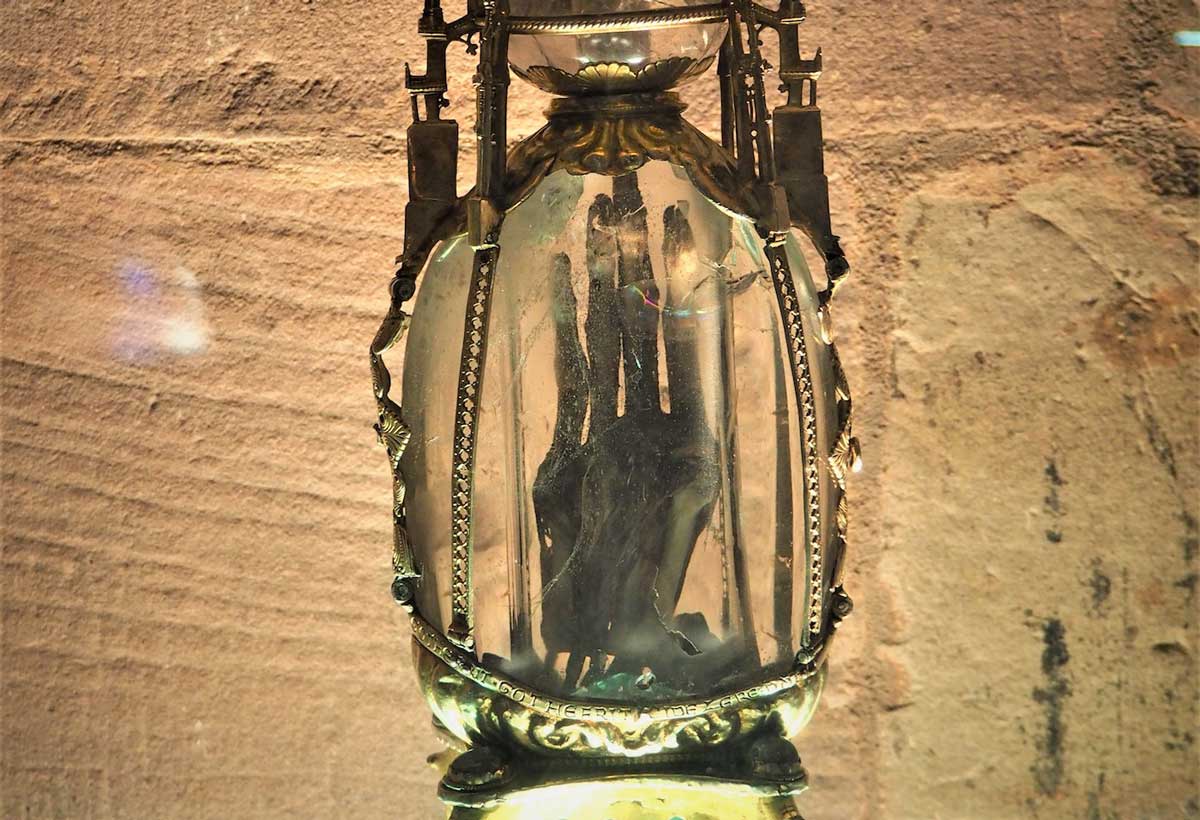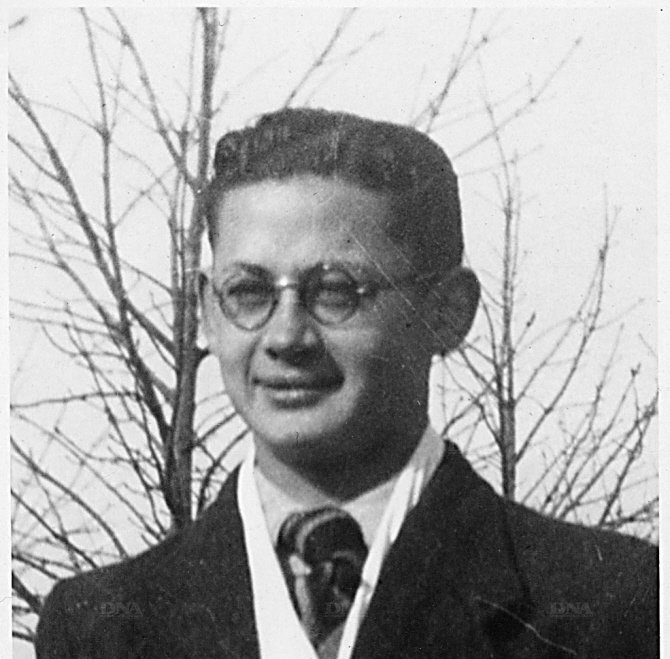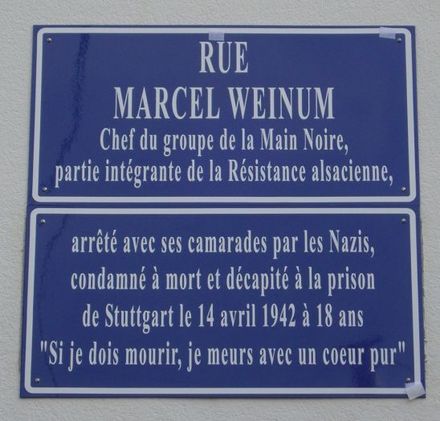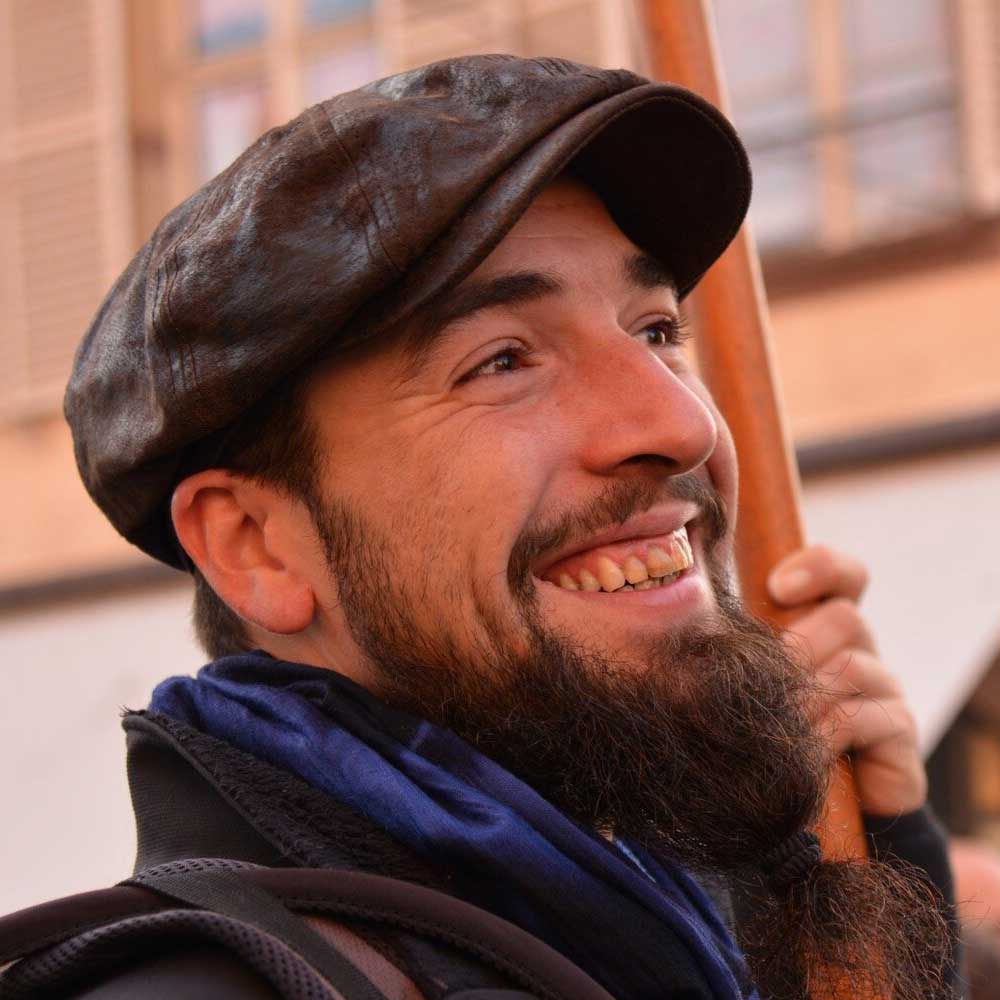The Black Hand
December 13th 2018, by Gabriel
Do you know the story of the Black Hand ? It has attracted much attention and has been doing so for centuries! The best thing is, it is still around today to give its testimony. From Saint Odile to the Second World War, the Black Hand has many things to tell you…
The legend of Attala’s black hand
You may have heard about Saint Odile, Alsace’s patron saint. She had an abbey built on top of the eponymous mount. It so happens that Saint Odile had a niece : Saint Attala. Though she is less known, she is yet Strasbourg’s patron saint !
Her father, Adelbert, had the Saint Stephen’s convent built and Attala got elected as its abbess. She was known for her great kindness and was very much loved. Her death was a very painful event for Strasbourg and all Alsace. For many weeks her body was exhibited for the pilgrims. In the Abbey of Hohenbourg, the abbess Werentrude passionately admired Saint Attala. She wanted a relic of the saint so much that she hired a thief and required him to cut one of Saint Attala’s hands and bring it back to her. The thief got caught in the act and the hand then kept in a reliquary. It is said that many miracles happened in its presence.
This relic, blackened by time and now more than a millenium old, is Saint Attala’s black hand and still visible in Saint Stephen’s church in Strasbourg.
The story of Marcel’s black hand
During World War II, it may well be that this black hand inspired a certain Marcel Weinum.
In September 1940, as an ordinary 16 year old student, he created a resistance group which he actually named the Black Hand. Made up solely of underage members, without the support of any adult, it was organized in several sealed cells, had weapons and an access to premises. It specialized in counter-propaganda, sabotage and intelligence.
Here is a quick summary : as soon as October 1940, the group paints on the walls of Strasbourg multiple crosses of Lorraine and patriotic inscriptions. Then, the organization sabotages railroad installations and Wehrmacht’s transmission stations. Its members also steal parked german cars, puncture tires and salvage weapons, papers and fuel coupons. The Black Hand starts throwing grenades on shop windows when those display a bust or a picture of Hitler.

On May 8th, 1941, around 10 pm, Marcel Weinum and Albert Uhlrich each throw a grenade on the windshield of an official car. It belongs to a certain Wagner (Robert, not Richard) and is parked between the square of the Students and the Kléber square.
The windshield explodes, the car is destroyed and the gauleiter Robert Wagner, Hitler’s highest representative in Alsace narrowly escapes death as he was in a coffee shop and had not yet gone back to his car.
Marcel Weinum and Ceslav Sieradzki are arrested on May 20th, 1941 at the Swiss border as they try to reach Basel. Their aim there is to get funds to continue the fight agains nazism. The whole network is arrested during the following month of July. Some of the members are sent to Schirmeck’s camp.
In the morning of December 12th, 1941, Ceslav Sieradzki is also transfered to this camp. On the same day, loud speakers announce that Ceslav Sieradzki has been shot « on grounds of resistance ». This is the first time that the Nazis use the term resistance in Strasbourg and in Alsace.
Ceslav Sieradski, a polish orphan, thus becomes the first resistant in Alsace to die for France. He is executed with a bullet in the neck with no trial whatsoever.
As for Marcel Weinum, he is sentenced to death and decapitated on April 14th, 1942 in Stuttgart (indeed, beheadings did not happen only during the French Revolution!). He had just turned 18 and the day before, he had written in a letter to his parents : « If I have to die, I die with a pure heart ». You will find that inscription on the walls of Saint Stephen’s middle school, next to the square of the same name which we visit during our many guided tours.
The other members of the Black Hand face a prison sentence, some of them are freed and forcibly enrolled in the German forces. They will die as « Malgré-nous » (french for against our will) on the Russian front.
In the end, this Black Hand name that could be quite scary, often in circumstances not to be envied from the 7th to the 20th century, ended up on the contrary as a positive symbol ! Here is proof, once again, that appearances should not be trusted… And our guides will be greatly pleased to tell you other stories of the kind during our Free Tours !






